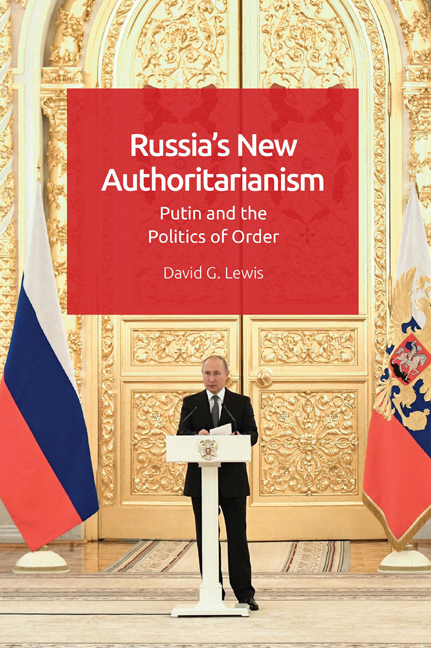Book contents
- Frontmatter
- Contents
- Preface
- Acknowledgements
- Note on Transliteration and Translation
- One Authoritarianism, Ideology and Order
- Two Carl Schmitt and Russian Conservatism
- Three Sovereignty and the Exception
- Four Democracy and the People
- Five Defining the Enemy
- Six Dualism, Exceptionality and the Rule of Law
- Seven The Crimean Exception
- Eight Großraum Thinking in Russian Foreign Policy
- Nine Apocalypse Delayed: Katechontic Thinking in Late Putinist Russia
- Conclusion
- Bibliography
- Index
Five - Defining the Enemy
- Frontmatter
- Contents
- Preface
- Acknowledgements
- Note on Transliteration and Translation
- One Authoritarianism, Ideology and Order
- Two Carl Schmitt and Russian Conservatism
- Three Sovereignty and the Exception
- Four Democracy and the People
- Five Defining the Enemy
- Six Dualism, Exceptionality and the Rule of Law
- Seven The Crimean Exception
- Eight Großraum Thinking in Russian Foreign Policy
- Nine Apocalypse Delayed: Katechontic Thinking in Late Putinist Russia
- Conclusion
- Bibliography
- Index
Summary
The friend, enemy, and combat concepts receive their real meaning precisely because they refer to the real possibility of physical killings.
Carl Schmitt (2007a: 33)Schmitt argues that political communities are not formed by the state, through legal citizenship, nor are they necessarily formed by ethnic belonging. Instead, they are shaped and moulded by a simple binary, the identification of a distinction between ‘friend’ and ‘enemy’. This distinction, argues Schmitt, is the very essence, the defining feature of ‘the political’. In Schmitt's famous aphorism: ‘The specific political distinction to which political actions and motives can be reduced is that between friend and enemy’ (Schmitt 2007a: 26). Liberal democratic states – always Schmitt’s main political target for critique – have either forgotten or deliberately disguised their political origins, and live in denial of the violence of the foundational friend/enemy decision. But Schmitt repeatedly asserts that at the base of any political entity this distinction still exists, creating defining boundaries around the political community.
When defining the enemy, Schmitt does not have in mind any kind of personal enmity, nor is the enemy defined by any sense of moral or aesthetic judgement. The ‘political enemy’ is ‘the other, the stranger; [ … ] he is, in a specially intense way, existentially something different and alien, so that in the extreme case conflicts with him are possible’ (Schmitt 2007a: 27). The enemy is a public enemy (hostis), a concept derived from Roman law, which distinguishes adversaries against whom the polity can declare war from mere criminals, thieves and brigands (Schmitt 2003: 51). The public enemy is distinguished from the personal enemy – in Latin, the inimicus; the enemy is the entity that poses a potential existential threat to the state, not simply an unpopular or despised group or individual. Although war is not necessarily desirable or advisable, the enemy is always defined by the possibility that war might be declared. Schmitt argues: ‘The friend, enemy, and combat concepts receive their real meaning precisely because they refer to the real possibility of physical killings. War follows from enmity. War is the existential negation of the enemy’(Schmitt 2007a: 33).
- Type
- Chapter
- Information
- Russia's New AuthoritarianismPutin and the Politics of Order, pp. 100 - 116Publisher: Edinburgh University PressPrint publication year: 2020



